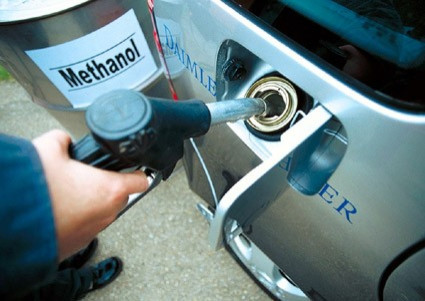Oil Industry Leaders Object To EPA's Newest Fuel Standard

Oil refiners must begin removing more sulfur, which creates smog linked to respiratory disease, from American gasoline blends, the Environmental Protection Agency (EPA) announced Monday. But oil industry leaders and some Republicans have taken issue with the EPA’s study used to make the regulation.
Public health and environmental activists have long awaited the final rule, as they have lobbied the EPA to complete the regulation since President Obama first asked the EPA to create it in 2010. The rule is a third phase that will cut sulfur content in gasoline from 30 parts per million to 10 parts per million beginning in 2017.
Sulfur burned in gasoline interferes with pollution-control mechanisms in engines and increases emissions linked to a range of respiratory diseases like lung disease and asthma, as well as heart disease and premature births and deaths.
Proponents of the rule say it is an important step to reducing air pollution and Obama’s most significant public health achievement this term. Opponents say the rule is too costly and air quality is improving without the rule.
“Without any doubt, this is the most significant move to protect public health that the EPA will make this year,” Frank O’Donnell, president of Clean Air Watch, said in a statement Monday. “There is literally no more effective tool to fight smog.”
According to the EPA, the new regulation will raise the cost of gasoline by about two-thirds of 1 cent per gallon and add about $75 to the price of cars. But oil industry officials say the rule will cost their industry $10 billion and increase gasoline costs by up to 9 cents per gallon.
“This rule’s biggest impact is to increase the cost of delivering energy to Americans, making it a threat to consumers, jobs and the economy,” Bob Greco, a downstream director for the American Petroleum Institute (API), said Monday. “But it will provide negligible, if any, environmental benefits. In fact, air quality would continue to improve with the existing standard and without additional costs.”
API commissioned a study by Baker & O’Brien, released in June 2013, which found the annual compliance cost for oil refineries will be $2.4 billion, increasing the cost of gasoline by 6 to 9 cents per gallon.
When asked about the EPA’s own estimate for the price increase in gasoline, API spokesman Carlton Carroll said the EPA “is using false assumptions to come up with its cost figure.”
The EPA addresses API’s study in its final ruling report released Monday, arguing that API exaggerated the costs to refineries in various ways. For example, EPA argues API based capital costs on the costs associated with the second phase of regulations, which requires refineries to strip out more sulfur than the third phase will. Oil industry officials say taking out the final bits of sulfur is more difficult and costly than taking out initial amounts.
Rep. Lamar Smith (R-Texas), chairman of the Science, Space and Technology Committee, said the EPA is basing the fuel standards on “secret science.”
“A majority of the agency’s claimed benefits for these standards are derived from taxpayer-funded studies that are hidden from the public and cannot be validated by independent scientists,” Smith said in a statement Monday. “Americans impacted by these costly regulations have a right to see the data and determine for themselves if the agency’s actions are based on sound science or a partisan agenda.”
Smith has been pressuring the EPA for years to increase its transparency and has co-sponsored a bill that would prohibit the EPA from proposing regulations based on scientific information that’s not publicly available. Next week, the EPA’s head of air and radiation will testify before the science committee about the agency’s regulatory actions.
“This regulatory action was supported by influential scientific information,” the EPA’s report states.
© Copyright IBTimes 2024. All rights reserved.





















